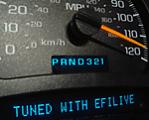I have been spending so much time learning how to tune the motor that I need to start thinking about tweaking the 4L60E. Most of my customers are 6 speeders but I have a few big inch motors to build that are going into automatic cars. What are some things to focus on without complicating things to get the tranny shifting solid. Is there a sticky or tutorial out there??
Howard




 Reply With Quote
Reply With Quote


 ],
],




